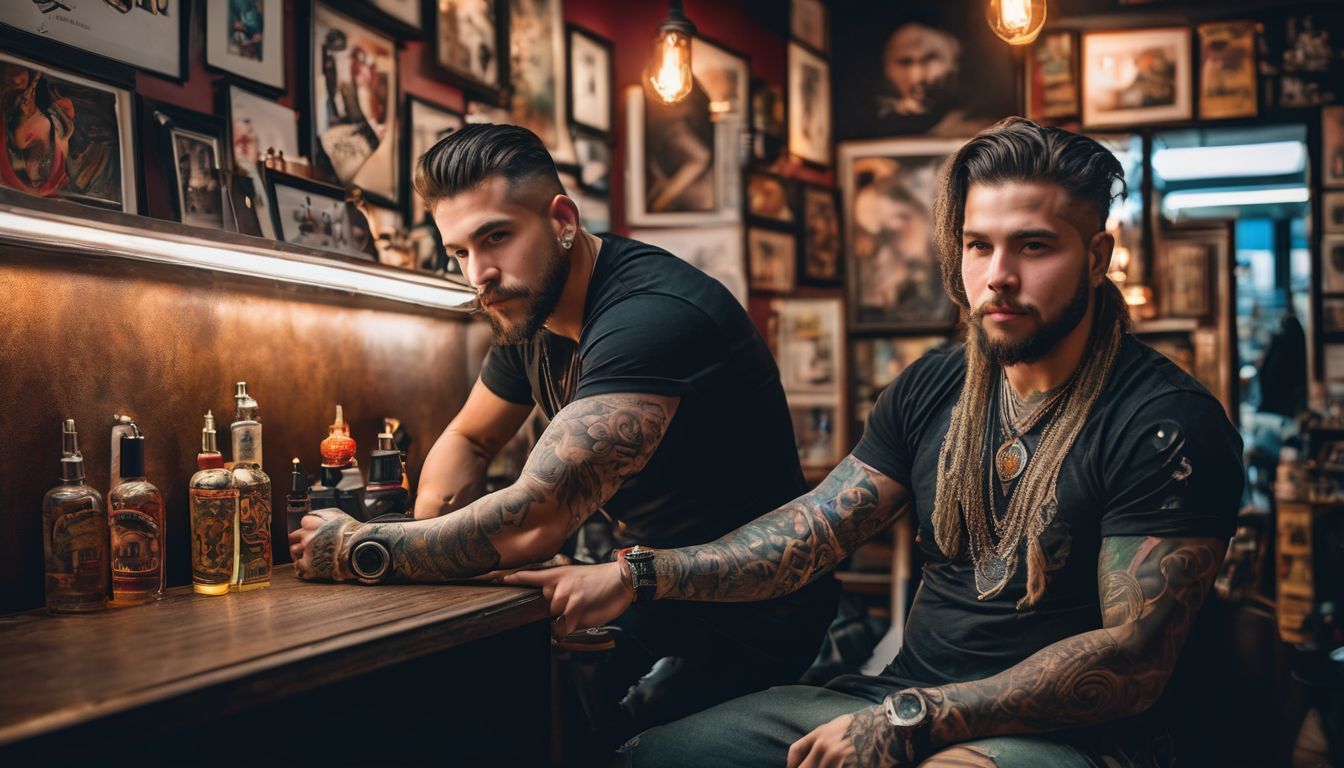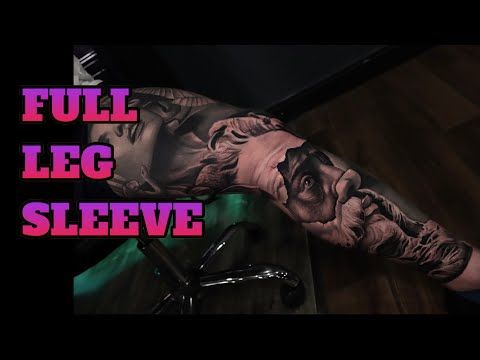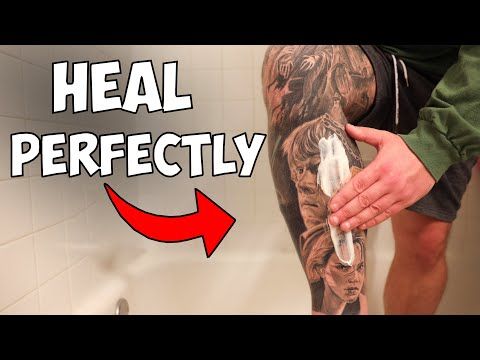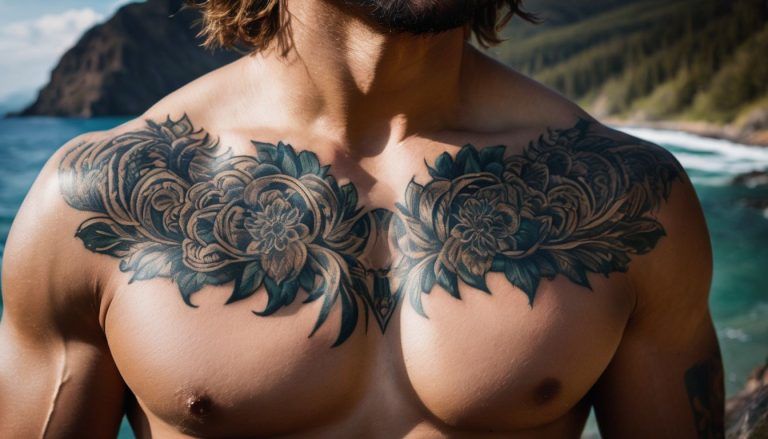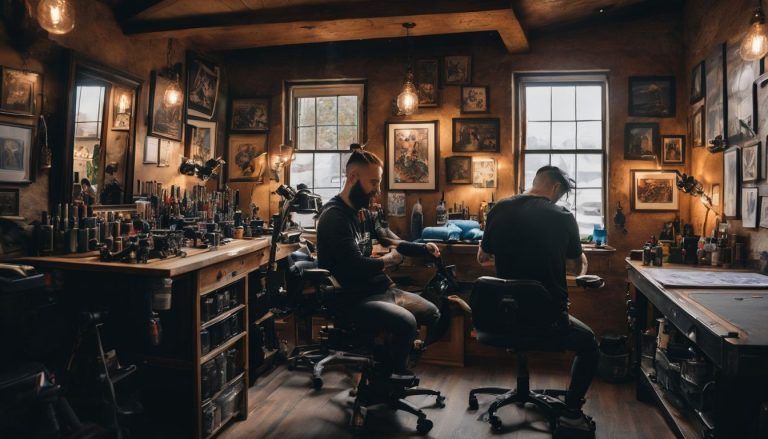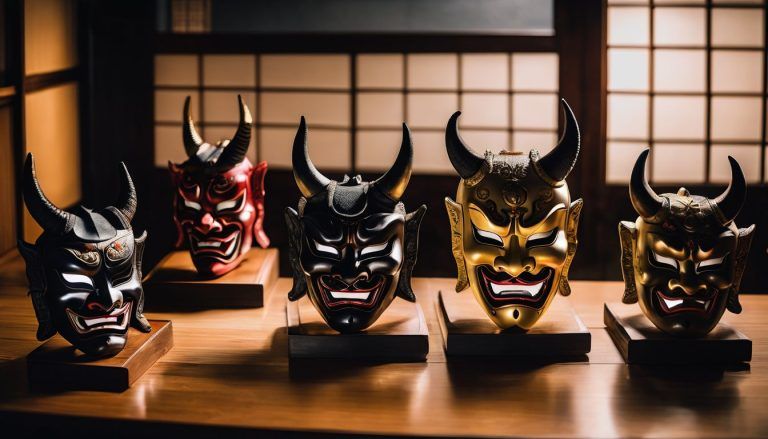The Ultimate Guide to Full Leg Tattoos: Designs, Pain, and Aftercare
Considering a full leg tattoo? You’re not alone; it’s a big decision that comes with questions about design, pain levels, and care. This guide is your one-stop resource for everything from eye-catching designs to managing discomfort and ensuring proper healing.
We’ve got the answers you need to make your ink journey smooth sailing. Dive in for all the details!
Key Takeaways
- Full leg tattoos offer diverse design possibilities, such as mandala, flower, animal, Japanese or tribal patterns. Each comes with its unique symbolism and visual appeal.
- A typical healing process for a full leg tattoo can last between 2 to 4 weeks. Proper aftercare involves keeping the tattoo clean, moisturized with specific creams, and avoiding certain activities like swimming or direct sun exposure.
- Pain levels during a leg tattoo vary depending on the location on the leg and personal pain tolerance. Discussing pain management options with your artist before starting can help make the experience more comfortable.
- Preparing for a full leg tattoo includes researching reputable artists familiar with this type of work and consulting them about design preferences and placement strategies that complement body shape.
- After getting a full leg tattoo, avoid exercise for at least 48 hours to prevent irritation; wait two to three weeks before shaving or waxing; touch-ups may be necessary over time to maintain vibrancy and detail.
Design Ideas for Full Leg Tattoos
From intricate mandala designs to bold and colorful animal motifs, there are endless design ideas for full leg tattoos. Whether you prefer a Japanese-inspired piece or tribal patterns, the possibilities are limitless for creating a unique and meaningful leg sleeve.
Mandala
Mandala designs make breathtaking full leg tattoos, merging spiritual symbolism with stunning visual appeal. Each mandala is a unique masterpiece, featuring intricate geometric patterns that draw the eye and invite contemplation.
They often carry deep personal meaning for the wearer, representing harmony, unity, or a personal journey.
Opting for a mandala leg sleeve tattoo promises not just an ornamental skin art piece but also an immersive storytelling experience. Skilled tattoo artists can tailor these elaborate designs to flow perfectly down your leg, creating movement with every curve and line.
Mandala tattoos demand precision and patience during the inking process but result in truly meaningful body art that stands out from the crowd.
Flower
Transitioning from intricate mandala designs to softer and more delicate imagery, floral leg tattoos are a popular choice for their beauty and symbolism. Whether you opt for a single bloom or an entire bouquet, there is no shortage of options when it comes to incorporating flowers into your full leg tattoo design.
From traditional roses to exotic orchids, floral motifs offer a versatile range of possibilities that can be tailored to suit individual tastes and preferences.
The soft curves and vibrant colors of flowers make them an appealing choice for those seeking an eye-catching yet elegant tattoo design. Additionally, the symbolic meanings associated with different flowers allow for personal expression through body art.
Animal
Consider incorporating animal designs into your full leg tattoo for a unique and personalized touch. Animal motifs, such as wolves, lions, or birds, can symbolize strength, freedom, and resilience.
These designs are versatile and can be adapted to various styles – from realistic to abstract – allowing you to express your individuality through your tattoo.
Animal-themed tattoos have been a popular choice among tattoo enthusiasts and offer a timeless appeal. Whether you opt for a majestic elephant representing wisdom and power or a graceful butterfly symbolizing transformation and beauty, an animal design on your leg sleeve tattoo can make a bold statement about who you are.
Embrace the symbolism of these creatures in your body art to create an impactful visual representation of yourself.
Japanese
When considering a full leg tattoo, Japanese designs offer a timeless and meaningful option. These designs often incorporate traditional elements such as koi fish, cherry blossoms, dragons, or geishas.
Each symbol holds deep cultural significance and can be customized to convey personal meaning. By choosing a skilled artist experienced in Japanese-style tattoos, individuals can achieve stunning and intricate designs that capture the essence of this ancient art form.
Next – Tribal
Tribal
Tribal leg tattoos are a bold and timeless choice, often featuring intricate patterns and symbolic designs inspired by indigenous cultures. These designs can vary widely, with some individuals opting for black ink only, while others incorporate vibrant colors for a modern twist.
Tribal leg tattoos hold deep cultural significance for many people and can serve as a powerful expression of heritage and personal identity.
When considering a tribal leg tattoo, it’s essential to research the specific cultural symbols or motifs you wish to incorporate to ensure respectful representation. Additionally, consulting with an experienced tattoo artist who specializes in tribal designs is crucial for achieving an authentic and visually striking result that respects the historical roots of these traditional designs.
The Healing Process of a Full Leg Tattoo
During the healing process of a full leg tattoo, it’s essential to understand the duration and aftercare tips. Using aftercare creams can help speed up the healing process and ensure your new ink looks its best.
Duration of healing
The healing process for a full leg tattoo typically lasts between 2 to 4 weeks, depending on how well you follow the aftercare instructions. It’s essential to keep your leg clean and moisturized during this time to promote proper healing and prevent infections.
Following the aftercare tips, using recommended creams, and avoiding activities that may irritate the tattoo will contribute to a faster healing process.
After getting a full leg tattoo, it’s crucial not to rush the healing timeline as doing so can compromise the quality of your tattoo. To ensure that your ink looks vibrant and fresh for years to come, be patient and diligent in caring for it during the entire duration of healing.
Aftercare tips
After getting a full leg tattoo, it’s crucial to follow these aftercare tips to ensure proper healing and maintain the vibrancy of your new art.
- Keep the tattoo clean and moisturized using a fragrance-free, gentle cleanser and a specialized tattoo aftercare lotion containing ingredients like beeswax and lanolin.
- Avoid exposing your leg tattoo to direct sunlight or tanning beds during the healing process to prevent fading and damage to the skin.
- Refrain from soaking the tattoo in water, such as pools, hot tubs, or baths, until it has fully healed to reduce the risk of infection.
- Wear loose – fitting clothing over your leg tattoo to prevent irritation during the healing phase while allowing the skin to breathe freely.
- Resist picking at any scabs or peeling skin on your leg tattoo, as this can lead to scarring and pigment loss.
- Seek immediate medical attention if you notice signs of infection around your leg tattoo, including increased redness, swelling, or pain that persists beyond the initial healing stages.
- Schedule touch – up appointments with your tattoo artist as needed for any areas that may have experienced color loss or uneven pigmentation over time.
Use of aftercare creams
After getting a full leg tattoo, using aftercare creams is essential for proper healing. These specialized creams help moisturize the skin and protect the tattoo from infections. Applying a thin layer of aftercare cream, such as those containing ingredients like vitamin E or shea butter, can speed up the healing process and prevent dryness or itching in the tattooed area.
Proper use of aftercare creams is crucial to maintain the vibrancy and longevity of your leg tattoo. By following this step diligently, you can ensure that your investment in the tattoo stays fresh and vibrant for years to come.
Managing Pain during and after a Leg Tattoo
Preparing for pain is essential when getting a leg tattoo, and discussing pain management options with your tattoo artist can help. Aftercare for pain relief, such as using recommended creams and following aftercare tips, will also aid in managing discomfort during the healing process.
Preparing for pain
To prepare for the pain of a full leg tattoo, you can:
- Discuss pain management options with your tattoo artist before the session.
- Consider taking over-the-counter pain relief medication beforehand.
- Practice deep breathing techniques to help manage discomfort during the tattooing process.
- Focus on a specific point in the room to distract yourself from the pain.
- Communicate openly with your tattoo artist if you need breaks during the session.
- Wear comfortable clothing to minimize any irritation around the tattooed area.
- Plan for rest and relaxation after getting your leg tattoo to aid in recovery.
Coping with pain
Preparing for pain is important, and coping with it during and after a leg tattoo can make the experience more manageable. Here are some tips to help you manage the discomfort:
- Stay relaxed: Deep breathing and focusing on something else can help distract from the pain.
- Communicate: Let your tattoo artist know if you’re feeling uncomfortable, and take breaks if needed.
- Apply numbing cream: Consider using a numbing cream before the tattoo session to minimize discomfort.
- Take pain relief: Over-the-counter pain medication can help alleviate post-tattoo soreness, while following the dosage instructions.
- Keep it clean: Following proper aftercare guidelines can prevent infection and reduce any unnecessary discomfort.
Aftercare for pain relief
- Apply a thin layer of fragrance – free and hypoallergenic aftercare cream to the tattooed area to keep it moisturized.
- Gently wash the tattoo with mild soap and water, avoiding harsh scrubbing, to prevent infection and aid in healing.
- Avoid exposing the tattoo to direct sunlight or tanning beds to prevent fading and irritation.
- Wear loose – fitting clothing to prevent friction and irritation on the tattooed area.
These aftercare steps are essential for managing pain and promoting proper healing of your full leg tattoo.
Preparing for a Full Leg Tattoo
Choose a reputable artist, discuss your design and placement preferences, and maintain proper hygiene to ensure a successful full leg tattoo experience. Ready to take the leap? Keep reading for more tips on getting the perfect leg tattoo!
Choosing a reputable artist
Researching and selecting a reputable artist for your leg tattoo is crucial to achieving the desired design and quality. Look for an artist with experience in creating leg tattoos, as this specialized skill can impact the outcome of your ink.
Ensure that the artist has a portfolio showcasing their work on legs, reflecting diverse styles from geometric designs to ornamental or Japanese motifs. Reading online reviews and seeking personal recommendations can also guide you toward a skilled professional capable of bringing your leg tattoo ideas to life.
When selecting an artist for your leg sleeve tattoo, consider their attention to hygiene and safety practices. A reputable artist follows strict cleanliness standards and uses sterilized equipment, reducing any risk of infection during the process.
Discussing design and placement
When considering a full leg tattoo, it is vital to spend time researching and choosing the right design and placement. Take into account factors such as the size and shape of your leg when selecting a design that complements your body.
Whether you opt for a mandala, flower, animal, Japanese, or tribal design, it’s essential to discuss the options with a reputable artist who can advise on suitable placements for each design.
Additionally, consider how the tattoo will interact with other elements on your legs if you plan to add more tattoos in the future.
Finding a skilled artist who understands both design and placement is crucial for achieving an aesthetically pleasing result. Moreover, before getting inked, ensure proper hygiene by keeping your skin clean and moisturized while maintaining overall health.
Maintaining proper hygiene
To ensure the best healing for your full leg tattoo, maintaining proper hygiene is essential. Follow these steps to keep your tattoo clean and free from infection:
- Gently wash the tattooed area with mild, fragrance – free soap and lukewarm water at least twice a day to remove any excess ink or blood.
- Pat the tattoo dry with a clean paper towel or let it air dry to avoid irritation and promote healing.
- Avoid wearing tight clothing that can rub against the tattoo and cause irritation or trap bacteria.
- Do not scratch or pick at the scabs as this can lead to scarring or loss of color in the tattoo.
- Apply a thin layer of fragrance-free, alcohol-free moisturizer recommended by your tattoo artist to keep your skin hydrated and assist in the healing process.
- Refrain from submerging your leg tattoo in water, such as pools, hot tubs, or baths until it is fully healed to prevent infection.
- Keep your bed sheets and clothing clean and changed regularly to avoid introducing bacteria to your fresh tattoo.
- Avoid direct sun exposure on your new leg tattoo and use sunscreen once it has fully healed to protect it from fading.
FAQs about Full Leg Tattoos
– Curious about the pain level of getting a full leg tattoo? Wondering how long it takes to heal or if you can exercise afterward? Find answers to these and more commonly asked questions about full leg tattoos in this section.
Does it hurt?
Tattooing on the leg can be painful, as it involves tattooing over bone and muscle. The pain level can vary depending on individual tolerance, with areas closer to bones typically causing more discomfort.
Factors such as skin thickness and the proximity of nerve endings also contribute to varying pain levels during the process.
During a leg tattoo session, it’s common to experience discomfort or even intense pain that may fluctuate in different areas. However, applying numbing creams or taking pain relievers before getting a leg tattoo can help manage the discomfort.
How long does it take?
The time it takes to complete a full leg tattoo often depends on the complexity, size, and artist’s speed. Large and intricate designs can take several sessions spanning a few hours each.
A typical session for a leg sleeve tattoo may last anywhere from 2 to 6 hours, with multiple sessions necessary for elaborate or detailed artwork. Factors such as breaks during the session and individual pain tolerance can also impact the duration of the tattooing process.
Aftercare plays a significant role in how long it takes for a leg tattoo to heal fully. Following proper aftercare guidelines will expedite the healing process, typically taking around 2-4 weeks for initial healing and an additional month or so for complete recovery.
Can I exercise after getting a leg tattoo?
Exercising after getting a leg tattoo is possible, but it’s important to take certain precautions. Wait for at least 48 hours before engaging in any physical activity that may cause excessive sweating or friction over the freshly tattooed area.
It’s essential to avoid activities that could cause irritation or compromise the healing process of your leg tattoo during the initial stages. Once the tattoo has passed through its initial healing phase, you can gradually resume your regular exercise routine, ensuring to keep the tattoo clean and adequately moisturized.
Now let’s delve into how to care for a newly inked leg tattoo during its healing process.
How do I care for my leg tattoo during the healing process?
To care for your leg tattoo during the healing process, keep it clean and dry to prevent infection. Follow your artist’s aftercare instructions which may include washing with a mild soap, applying a thin layer of fragrance-free moisturizer, and avoiding direct sunlight or soaking in water.
Additionally, wearing loose clothing can help prevent irritation to the tattooed area while it heals.
After getting a leg tattoo, ensure you follow proper aftercare advice such as avoiding scratching or picking at the scabs that form and refraining from excessive sweating or rubbing on the newly inked skin.
Can I shave or wax my legs after getting a tattoo?
After getting a tattoo on your leg, avoid shaving or waxing the area for at least two to three weeks. Shaving or waxing can irritate the healing skin and disrupt the tattoo’s recovery process by introducing bacteria or causing friction.
This is crucial to prevent infection and ensure that the tattoo heals properly.
Following proper aftercare guidelines, including keeping the tattoo clean and moisturized, will help maintain its integrity during the healing period. Utilize fragrance-free lotion to keep the skin hydrated without clogging pores where your new ink resides.
What about touch-ups?
After ensuring proper healing of your leg tattoo, you might consider touch-ups. Touch-ups are common for tattoos to refresh their appearance and ensure the colors remain vibrant. This process helps maintain the integrity of your leg tattoo over time.
As with any tattoo aftercare, it’s essential to follow the artist’s recommendations for touch-up care. Proper maintenance and regular touch-ups can keep your full leg tattoo looking its best for years to come.
Considering reputable artists and discussing touch-up options during the initial process will help ensure that you receive quality service when it comes time for those necessary enhancements.
Conclusion
Proper aftercare is crucial for maintaining the quality of your leg tattoo. Following the healing process guidelines and using recommended aftercare products will ensure that your tattoo heals properly and retains its vibrancy.
It’s essential to choose a reputable artist who can guide you through the design, placement, and aftercare processes.
Remembering to follow all the necessary steps outlined in this guide will help guarantee that your leg tattoo remains a stunning piece of art for years to come.
FAQs
1. What designs can I choose for a full leg tattoo?
You can pick from many designs like geometric, ornamental, Japanese, or even small and meaningful patterns to create your unique leg sleeve tattoo.
2. Does getting a leg tattoo hurt more than other tattoos?
Getting a large leg tattoo may cause some pain because different spots on your leg feel more sensitive. The level of pain you might feel also depends on the specific design and size you choose.
3. How do I take care of my new full leg tattoo?
Treat your new ink with great aftercare by keeping it clean, moisturized, and protected from the sun to help it heal properly and stay looking sharp!
4. Can both males and females get full-leg sleeve tattoos?
Absolutely! Full-leg sleeve tattoos are for everyone; there are loads of cool leg tattoo designs that suit males as well as plenty of female leg tattoo ideas too.
5. Are all full-leg tattoos permanent?
Yes, most full-leg tattoos are permanent additions to your body art collection so think carefully about what kind of lasting design matches your style before diving in.

